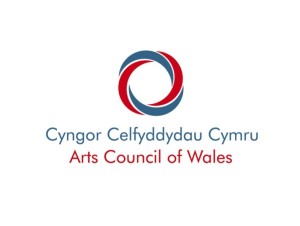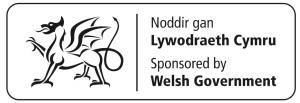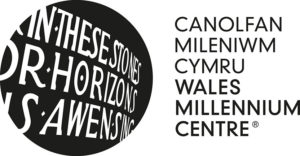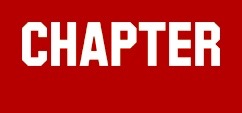Research for Natasha was inspired by the Mexican Journalist Lydia Cacho and her book, Slavery Inc; The Untold Story of International Sex Trafficking.
A few words from Brenda Oakes Chair of Asking4It Productions
According to a Home Office document dated July 2014 the United Kingdom is one of the top five countries throughout the world where potential victims of modern slavery are most likely to originate.
The other four are Albania, Nigeria, Vietnam and Romania. (Modern Slavery: How the UK is leading the Fight, Home Office document, July 2014).
Yes, you did read this statistic correctly, shocking though it seems, taken from the second paragraph of this 10 page Government document outlining its new Modern Slavery Bill.
This law is deemed to be necessary and urgent in response to statistics gained from the National Referral Mechanism in 2013 listing 112 countries of origin providing today’s slaves. As part of this recognition that slavery is on the increase in Britain there is a newly appointed Anti-Slavery Commissioner. In 2014 new specialist child advocates were trialled over 23 local authority areas across Britain.
Most citizens are likely to be astounded to learn that such action is required at all, most having been taught at school that slavery was abolished in the 19th century when trafficking of African slaves via the ports of Liverpool and Bristol was made illegal thanks to William Wilberforce.
The new Bill received its third hearing on 4 March 2015 in the House of Lords although to date, hasn’t received much publicity – in line with this billion dollar industry spread throughout the world. The Modern Slavery Bill is the first of its kind in Europe and one of first in the world to specifically address slavery and trafficking in the 21st century.
It is possible that the phrase ‘slave drivers’ was long ago expunged from our dictionaries and it will not have been missed for obvious reasons. It seems that the world has not changed much in the ensuing years since the abolition bill, to such an extent that the phrase is re-emerging. It is difficult to imagine that slavery in our own country may not have been eradicated with William Wilberforce. If we consider the broader classifications of the word as understood in society today, it is more likely that slavery was just hidden out of sight.
The United Nations estimate that the number of of people involved in the slave trade today is between 27 and 30 million. It is reckoned that this trade generates 35 billion dollars annually. Further estimates show that 10 nations contain 76% of the world’s enslaved.
These are:
India -14 million
China – 2.9 million
Pakistan – 2.1 million
Nigeria – 701, 000
Ethiopia – 651, 000
Russia – 516, 000
Thailand – 473, 000
Congo – 462, 000
Myanmar – 384, 000
Bangladesh – 343, 000
Slaves these days are considered a more attractive investment in today’s high wage environments than regular employees, particularly for unpleasant work. At the height of the American slave trade the value of one slave was equivalent to $40, 000. Today a slave can be bought for $90. As well as the shock of learning that slaves are increasing in number, the average citizen’s perception of the meaning of the word slave is likely to be limited also.
The most prevalent area of slavery today in Britain is within the legal sex industry, mainly involving immigrants who have often been misled and defrauded.
However, defining sexual slavery is difficult as some regard this as inherent in all commercial sex, others that it requires an element of force, fraud or coercion to be present. Some women are forced to undergo plastic surgery or abortions whilst enslaved in the sex trade.
The range of activities in this trade is broad and includes the list below:
■Forced migrant labour (kept out of the news except when brought into public view, e.g Chinese cockle pickers drowned in Morecambe Bay).
■Sex slavery (most encountered in wealthy countries including the US, Canada, Western Europe and the Middle East and may involve the country’s own citizens coerced into the trade in addition to trafficked individuals).
■Conscription of child soldiers (viewed as government endorsed slavery – most deny it exists).
■Debt bondage (often continues through generations – if your mother is a slave, you too are a slave).
■Religious prostitution – ritual servitude (still found in some countries at traditional shrines where slaves are considered to be ‘wives of the Gods’ and exploited by those who represent the Gods).
■Abduction and sale (reports from late 2014 state that ISIL take women and children to market for sale).
A UN estimate puts the number sold to date at 5-7,000. Similarly, the remaining 226 Borno schoolgirls kidnapped by Boko Haram in April 2014 will be sold into slavery according to the organization’s leader. This list is not complete and it is highly probable that new forms of money-making via the enslavement of vulnerable people are invented on a regular basis. Slavery is one of the oldest crimes recorded within civilisation.
Within art, a quick Google search reveals that most of the contemporary drama based on slavery is written from a historic aspect. The most recent include Twelve Years A Slave, a high profile film by artist Steve McQueen released in August 2013. This brought into focus the state of slavery in the 19th century and received many plaudits. The film was based on a true account written by the freed slave himself.
I Am Slave, made for Channel 4 and is described as “one woman’s fight for freedom from modern-day slavery”. There is no further information available on the Channel 4 website.
Further research revealed a review in The Telegraph of a book called Not In My Town, by Dillon Burroughs and Charles Powell who describe this work as a “look into the secret world of America’s modern slave trade”. There is a chapter on international human trafficking and the book is based on Kong Chim’s dramatic story from 1995 to the day she escaped in 1997.
With the libretto Natasha, Jane is departing from the baroque, surreal world of Butcher – a performance fresh in my memory for its audacity, visual and aural spectacle. Not one to shy away from a subject many find difficult, inappropriate even, the challenging theatre of Butcher was an experience not to be forgotten – on a topic not easily broached. I invited several friends to accompany me to Butcher but they were unable to attend due to the sensitive nature of the subject explored.
I am an artist with 30 years experience of creating collaboratively with all sectors of the community and welcome the opportunity to share in the development of Jane’s ambitions for Natasha. It will be a vehicle to develop urgent thinking in contemporary theatre with a subject desperate to be brought into the realm of public consciousness.
Mae Asking4It Productions yn cael ei archifo bob hyn a hyn gan Lyfrgell Genedlaethol Cymru, a hynny ers 2016.
Asking4It Productions are archived at intervals by The National Library of Wales since 2016.
Hawlfraint Asking4It Productions. Cedwir Pob Hawl 2022
Copyright Asking4It Productions. All Rights Reserved 2022


![Lottery_landscape_black[1].jpg (1)](http://asking4itproductions.co.uk/wp-content/uploads/2017/05/Lottery_landscape_black1.jpg-1-300x76.jpg)





